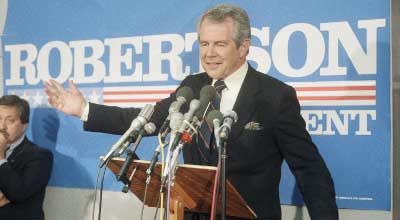Pentecostals in Politics: A Silent Minority
A phenomenon is emerging in politics today, one off the radar screen of most political observers. As John Stemberger, an Orlando attorney and the president of the Florida Family Policy Council, sees it, this movement hasn’t come crashing on the scene all at once.
Slowly making its way into the public eye is the wave of proactive involvement among Pentecostal/charismatic Christians in the American political system. In a Charisma article, Stemberger writes, “It is becoming an increasingly powerful force with enough potential to change a nation.”
He argues that Pentecostalism is reshaping the face of American politics and symbolizes a larger movement to bring America back to its original Judeo-Christian values.
According to the World Christian Database, there are almost 80 million “renewalists” in the U.S., which includes Pentecostals, charismatics and neo-charismatics.
But to understand how influential the Pentecostal political movement is becoming, Stemberger says we must first understand how far they have come regarding politics.
Pentecostals have historically remained unengaged in politics and public policy.
“With a focus on robust worship, church life and spiritual gifts, they’ve held a natural disposition against engaging in ‘the things of the world’ such as politics,” Stemberger explains.
He says this was evident during World War I, when most Pentecostals were pacifists. Although Pentecostal leaders had little to say about nuclear disarmament in the 1950s, many “boldly” preached on why it was so important to not play sports on the Lord’s day.
An emerging movement by believers—the Religious Right—became popular in the late ’70s and early ’80s. Christians spoke up in record numbers, deciding they could not sit idle while the nation slid into moral decline.
“Their theology, which previously saw politics as dirty and something the church shouldn’t get involved in, was replaced with a conviction that embraced a believer’s duty to be fully engaged in shaping the world,” Stemberger says.
The first major charismatic figure to appear in the Religious Right was Pat Robertson. Robertson formed the Freedom Council, a short-lived national organization, in the early ’80s. The nonprofit group, which used quotes from the Founding Fathers in its literature, began organizing grass-roots citizens to register voters in churches and raise awareness for Christians running for office.
Robertson announced his candidacy to run for president in 1986, and many of the same people who ran his campaign were used by the Freedom Council’s network.
As president of Christian Broadcasting Network, Robertson had a strong media presence—which gave him a built-in following of Pentecostals, who rose up to support “one of their own.” This momentum him carried him to the top of the 187 Iowa straw poll, which pushed Bob Dole and George H.W. Bush into second and third place. This made national news and stunned the GOP establishment.
The momentum eventually died down, and Robertson ended his campaign before the 1988 primaries. He then hired Ralph Reed a dynamic political operative, to spearhead the Christian Coalition.
This group used Robertson’s political campaign supporters to create a “national grass-roots organization that proved to be the most significant force in modern American politics for getting Christians involved in local party politics,” writes Stemberger.
Now called the Christian Coalition of America, the organization has dissipated into a weak and staggered group, but for more than a decade, “no other group rivaled the scope and reach of its influence, and it must not be overlooked that this all began with a charismatic,” Stemberger says.
This is adapted from John Stemberger’s article, “The Rising Tide of Influence,” which originally appeared in the November issue of Charisma. Click here to view the digital issue.














































